Caryn
 In what reality is an “invisible” army a thing…much less important? Well, the answer is…in World War II. During that war, in which battles were being fought against multiple enemy nations, of multiple fronts, the British needed a little unusual help with the different fronts. In actuality, no British Fourth Army ever took the field. That didn’t mean that they weren’t very effective in their work. but they existed as part of the deception plans Operation Cockade and the later Operation Fortitude North. During these operations, the Germans were encouraged to believe that a Fourth Army had been established with its headquarters in Edinburgh Castle, and that it was preparing to invade Norway. Britain’s “Fourth Army” was successful in drawing and keeping the German units away from the real invasion zone in Normandy. Then, in the subsequent ‘Fortitude South’ the Fourth Army with different units was presented as part of the fictitious First United States Army Group (FUSAG) in its threat to the Pas de Calais.
In what reality is an “invisible” army a thing…much less important? Well, the answer is…in World War II. During that war, in which battles were being fought against multiple enemy nations, of multiple fronts, the British needed a little unusual help with the different fronts. In actuality, no British Fourth Army ever took the field. That didn’t mean that they weren’t very effective in their work. but they existed as part of the deception plans Operation Cockade and the later Operation Fortitude North. During these operations, the Germans were encouraged to believe that a Fourth Army had been established with its headquarters in Edinburgh Castle, and that it was preparing to invade Norway. Britain’s “Fourth Army” was successful in drawing and keeping the German units away from the real invasion zone in Normandy. Then, in the subsequent ‘Fortitude South’ the Fourth Army with different units was presented as part of the fictitious First United States Army Group (FUSAG) in its threat to the Pas de Calais.
The Fourth Army was always a “fictitious field army.” It first came into being as part of the British Expeditionary Force during the World War I. It was actually formed on February 5, 1916, under the command of General Sir Henry Rawlinson. The plan was for this fictitious army to carry out the main British contribution to the Battle of 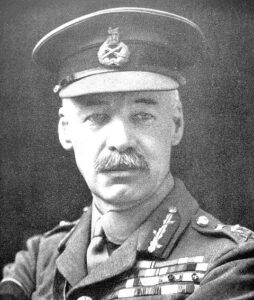 the Somme, but they quickly saw how effective a rumor could be in a war situation, and that is truly what this was. Basically, the word is sent out that a huge army is blocking a front that the enemy is trying to reach, or that they are planning to attack the enemy on a different front. So, the enemy decides to take another route…often a longer route, or in response to the rumored attack, the enemy sends it troops to the wrong place all together…only to find out they have been duped.
the Somme, but they quickly saw how effective a rumor could be in a war situation, and that is truly what this was. Basically, the word is sent out that a huge army is blocking a front that the enemy is trying to reach, or that they are planning to attack the enemy on a different front. So, the enemy decides to take another route…often a longer route, or in response to the rumored attack, the enemy sends it troops to the wrong place all together…only to find out they have been duped.
It must have been awful to take the troops into what is expected to be a battle, only to find out that they had been fooled. Imagine how that would make you look to your troops. The intel was completely false, and they fell for it. That must have made they feel very stupid on top of the fact that they wasted a lot of time on an imaginary enemy. While the Germans, in this case, looked incredibly stupid, it made the British Army look quite wise. Who would have thought that “make believe” could be such an effective weapon of warfare?
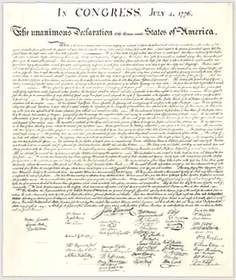
 When a country is fighting for recognition, one of the most important events is when other countries recognize your country as being an independent nation. It’s rather hard to conduct business with other nations, if you are viewed as a rouge or non-existent nation. That was the position the United States found themselves in right after the Declaration of Independence was adopted. Just because a country adopts its declaration of independence, doesn’t mean that it’s a done deal. That document can and has been the cause of major wars. The United States was no exception on the war end of that either. They fought long and hard to win that declared independence from Great Britain.
When a country is fighting for recognition, one of the most important events is when other countries recognize your country as being an independent nation. It’s rather hard to conduct business with other nations, if you are viewed as a rouge or non-existent nation. That was the position the United States found themselves in right after the Declaration of Independence was adopted. Just because a country adopts its declaration of independence, doesn’t mean that it’s a done deal. That document can and has been the cause of major wars. The United States was no exception on the war end of that either. They fought long and hard to win that declared independence from Great Britain.
Finally, the coveted recognition came when on December 17, 1777, the French foreign minister, Charles Gravier, count of Vergennes, officially acknowledged the United States as an independent nation. It came after news of the Continental Army’s overwhelming victory against the British General John Burgoyne at Saratoga. The victory gave Benjamin Franklin new leverage in his efforts to rally French support for the American rebels. Although the victory occurred in October, news did not reach France until December 4th. Remember that this mail system was worse than “snail mail” ever was. Messages had to be sent by ship across the ocean.
Benjamin Franklin had quickly mustered French support upon his arrival in December 1776. France’s humiliating loss of North America to the British in the Seven Years’ War made the French eager to see an American victory. Still, the French king worried about the consequences of backing “the rebels” openly. You can’t really blame him because an act like that could bring war to his own country. Still, he did back them in every other way. In May 1776, Louis XVI sent unofficial aid to the Continental forces and the playwright Pierre-Augustin Caron de Beaumarchais helped Franklin organize private assistance for the American cause.
Benjamin Franklin, who often wore a fur cap, captured the imagination of Parisians as an American man of nature and his well-known social charms stirred French passions for all things American. His personality made him the toast of Parisian society. He was very knowledgeable, and he had a way of enchanting groups of people 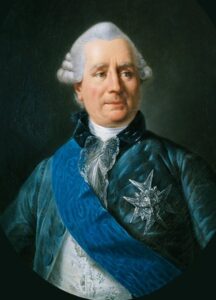
 with his wide-ranging knowledge, social graces, and witty conversation. Nevertheless, he was not allowed to appear at court, so any legal assistance he might have offered in the defense of the United States, was never heard.
with his wide-ranging knowledge, social graces, and witty conversation. Nevertheless, he was not allowed to appear at court, so any legal assistance he might have offered in the defense of the United States, was never heard.
Finally, with the impressive and long-awaited rebel victory at Saratoga, Louis XVI was convinced that the American rebels had some hope of defeating the British empire. His enthusiasm for the victory paired with French Foreign Minister Gravier’s concern that the loss of Philadelphia to the British would lead Congress to surrender, gave Franklin two influential allies with two powerful, albeit opposing reasons for officially backing the American cause, and so it was that a formal treaty of alliance with the United States followed on February 6, 1778.
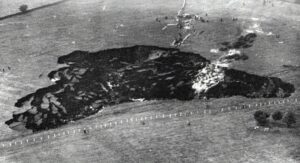 Underground mining always has the potential to become deadly. The people of New Cumnock in Ayrshire, Scotland know that all too well after a mine collapsed, trapped 120 miners underground in Knockshinnoch Castle colliery. The tragic event became known as the Knockshinnoch disaster and it occurred in September 1950 in the village of New Cumnock, Ayrshire, Scotland. The disaster began when a glaciated lake filled with liquid peat and moss flooded the pit workings, trapping more than a hundred miners underground. That set of a rescue effort that lasted for several days. Teams worked non-stop to reach the trapped men. They did finally reach the men, but by the time they were able to reach them, three days later, thirteen men had died.
Underground mining always has the potential to become deadly. The people of New Cumnock in Ayrshire, Scotland know that all too well after a mine collapsed, trapped 120 miners underground in Knockshinnoch Castle colliery. The tragic event became known as the Knockshinnoch disaster and it occurred in September 1950 in the village of New Cumnock, Ayrshire, Scotland. The disaster began when a glaciated lake filled with liquid peat and moss flooded the pit workings, trapping more than a hundred miners underground. That set of a rescue effort that lasted for several days. Teams worked non-stop to reach the trapped men. They did finally reach the men, but by the time they were able to reach them, three days later, thirteen men had died.
The men who survived were all found together 24 hours after the disaster began, and the thirteen men who died had been separated from the main group. They were missing for two more days before they were finally found. When the lake flooded, it released a field about the size of a football field into the mine. The resulting crater was about 300 feet by 200 feet and about 50 feet deep. The crater then sent liquid peat cascading into the mine, effectively blocking any exit for the men.
Thankfully, the mine owners had the forethought to install a phone in the mine, and the miners were able to phone for help. There was no way of reaching them, but the rescuers knew they were still alive, so the rescue efforts began in earnest. Rescue workers decided the easiest way to get them out was through an abandoned mine, next door. It took until 10:30pm local time for the rescuers to clear a passage through the unused mine and break through the final 30-foot wall of coal and rock that separated the two collieries. The rescue team, 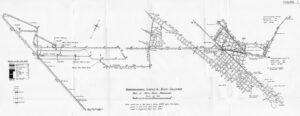 made up of hundreds of miners, firefighters, and trained rescuers, worked all day to shore up the walls and ceiling of the old mine. Because the tunnels were so cramped, the workers had to work in shifts, using fans to disperse the gas known as firedamp which accumulates in sealed mines. Firedamp is not poisonous, but it reduces the amount of oxygen in the atmosphere making breathing difficult, not to mention the fact that it is also highly flammable. At one point, a rescue worker collapsed because the air was so foul. He had to be helped to the surface. The situation was really getting serious, and time was running out. The danger of explosion meant the rescuers had to use hand tools to cut through the rock delaying the rescue even more.
made up of hundreds of miners, firefighters, and trained rescuers, worked all day to shore up the walls and ceiling of the old mine. Because the tunnels were so cramped, the workers had to work in shifts, using fans to disperse the gas known as firedamp which accumulates in sealed mines. Firedamp is not poisonous, but it reduces the amount of oxygen in the atmosphere making breathing difficult, not to mention the fact that it is also highly flammable. At one point, a rescue worker collapsed because the air was so foul. He had to be helped to the surface. The situation was really getting serious, and time was running out. The danger of explosion meant the rescuers had to use hand tools to cut through the rock delaying the rescue even more.
Everyone was very focused on saving the trapped men. The volunteers were working above ground, filling the crater made by the landslide with haystacks, trees and other materials to prevent any further slippage. They knew that is more peat fell into the hole, it could have blocked what little ventilation the trapped men had. The buried miners kept in phone contact every 15 minutes or so. They were told how they could help the rescue operation by digging carefully and slowly, so as not to let in a sudden rush of foul air from the unused pit, because they had no oxygen masks to help them breathe.
Finally, the wall was breached. To let the family and friends of the trapped men know that their loved ones were safe, a siren was sounded on the surface. Immediately, huge crowds gathered near the pithead. The police linked arms to form a protective cordon around the exit. The last thing the men needed was a rush of people the minute they reached the surface. Shortly before midnight, rescuers began taking food and drink into the pit for the miners. They had been underground for so long without nutrition and hydration. While the rescuers 
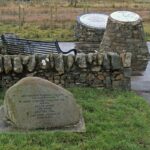 were now with the men, the process of bringing them out of the mine would not be a speedy one. The rescue tunnel was only wide enough for one man to crawl through at a time, and many are said to be weak, so they waited while they ate and drank some water, before beginning the trek out. The Area Manager of the National Coal Board David McArdle has described the rescue operation as the greatest in the history of Scottish mining.
were now with the men, the process of bringing them out of the mine would not be a speedy one. The rescue tunnel was only wide enough for one man to crawl through at a time, and many are said to be weak, so they waited while they ate and drank some water, before beginning the trek out. The Area Manager of the National Coal Board David McArdle has described the rescue operation as the greatest in the history of Scottish mining.
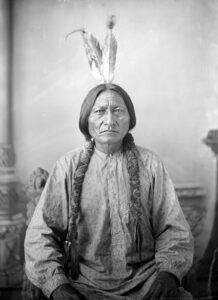 Sitting Bull was a Hunkpapa Lakota leader who led his people during years of resistance against United States government policies. The Hunkpapa Lakota is a branch of the Sioux tribe. Sitting Bull was a rather charismatic person, and people were willing to follow him because of it. He was a rather mysterious historical figure. He was not impulsive, nor was he calm. Sitting Bull had a strange personality. He was most serious when he seemed to be joking. He also possessed the power of sarcasm, and he used it to his advantage. These things are likely what made him a good leader for his people.
Sitting Bull was a Hunkpapa Lakota leader who led his people during years of resistance against United States government policies. The Hunkpapa Lakota is a branch of the Sioux tribe. Sitting Bull was a rather charismatic person, and people were willing to follow him because of it. He was a rather mysterious historical figure. He was not impulsive, nor was he calm. Sitting Bull had a strange personality. He was most serious when he seemed to be joking. He also possessed the power of sarcasm, and he used it to his advantage. These things are likely what made him a good leader for his people.
Sitting Bull was a man given to having visions, and before the Battle of the Little Bighorn, he had a vision in which he saw many soldiers, “as thick as grasshoppers,” falling upside down into the Lakota camp. The Hunkpapa Lakota people took the vision as a sign of a major victory in which many soldiers would be killed…and maybe it was. Just three weeks later, on June 25, 1876, the confederated Lakota tribes, along with the Northern Cheyenne tribe, defeated the 7th Cavalry under Lieutenant Colonel George Armstrong Custer, decimating Custer’s battalion. The battle and it’s timing seemed to bear out Sitting Bull’s prophetic vision. Again, Sitting Bull’s leadership inspired his people to 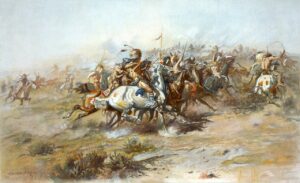 a major victory.
a major victory.
Of course, the United States government immediately sent thousands more soldiers to the area, in response to the battle. Any Indians who were in small groups or alone were a target, as were villages of peaceful Indians. Many were forced to surrender over the next year, but Sitting Bull refused to. In May 1877, he led his band north to Wood Mountain, North-West Territories, which is now Saskatchewan. Canada. Sitting Bull stayed in that area until 1881, at which time he and most of his band returned to US territory and surrendered to US forces.
Sitting Bull’s charismatic personality helped him out again when he went to work as a performer with Buffalo 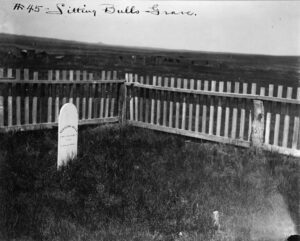 Bill’s Wild West show for a while, before returning to the Standing Rock Agency in South Dakota. That became one of the biggest mistakes Sitting Bull would ever make. Due to fears that he would use his influence to support the Ghost Dance movement, Indian Service agent James McLaughlin at Fort Yates ordered his arrest on December 15, 1890. Sitting Bull’s followers refused to go quietly, and in the struggle with police, Sitting Bull was shot in the side and head by Standing Rock policemen Lieutenant Bull Head and Red Tomahawk. His body was taken to nearby Fort Yates for burial. In 1953, his Lakota family exhumed what were believed to be his remains, reburying them near Mobridge, South Dakota, near his birthplace.
Bill’s Wild West show for a while, before returning to the Standing Rock Agency in South Dakota. That became one of the biggest mistakes Sitting Bull would ever make. Due to fears that he would use his influence to support the Ghost Dance movement, Indian Service agent James McLaughlin at Fort Yates ordered his arrest on December 15, 1890. Sitting Bull’s followers refused to go quietly, and in the struggle with police, Sitting Bull was shot in the side and head by Standing Rock policemen Lieutenant Bull Head and Red Tomahawk. His body was taken to nearby Fort Yates for burial. In 1953, his Lakota family exhumed what were believed to be his remains, reburying them near Mobridge, South Dakota, near his birthplace.

 My great grandniece, Reece Balcerzak Had a harsh beginning to her life. She was born two months prematurely and spent a couple of months in Denver at Presbyterian Saint Luke’s Hospital. She had some growing to do and they had to get her to where she would have been if she had not been born early. Through it all this feisty little girl persevered and obediently grew. Soon (60 days to be exact) Reece was discharged, and since then, she has grinned, laughed, and smiled her way into the hearts of all who know her. For me, her biggest gift is the gift of a smile. In fact, she is almost never seen without one. She wears it like most people wear clothes…as a vital part of her apparel. What a cheerful blessing that is.
My great grandniece, Reece Balcerzak Had a harsh beginning to her life. She was born two months prematurely and spent a couple of months in Denver at Presbyterian Saint Luke’s Hospital. She had some growing to do and they had to get her to where she would have been if she had not been born early. Through it all this feisty little girl persevered and obediently grew. Soon (60 days to be exact) Reece was discharged, and since then, she has grinned, laughed, and smiled her way into the hearts of all who know her. For me, her biggest gift is the gift of a smile. In fact, she is almost never seen without one. She wears it like most people wear clothes…as a vital part of her apparel. What a cheerful blessing that is.


Reece is always busily participating in something. She has played T-Ball and played in the fall leaves with her little brother, Aysa Balcerzak, and most recently, she took on swimming. She loves swimming, and in fact she recently received a Certificate of Achievement in swimming…something she is very proud of. Learning to swim is no small feat, and we are very proud of her. While there is no Certificate of Achievement for being a great big sister, Reece has certainly mastered that skill. Reece was so excited to become a big sister, and her little brother loves his big sister very much. He is always happy to spend time with her, and she loves making him feel very happy.

 These days, Reece has a new habit…thumbs up. It fits her to a tee. For Reece, it’s all a part the positivity that is Reece. Maybe it comes from the fight that started immediately after she was born, I don’t know, but nothing gets her down. She is always happy, energetic, and full of life. The gift of her smile is something that is truly a gift. It fills her face with joy and lights up the room for everyone around her. I just can’t say enough about what a sweet girl our little Reece is. She is in school these days and doing very well. I know she is well liked, because who can resist such a wonderful smile. And who can resist such a positive attitude. Little Reece makes those around her smile. It is her gift to others. Today is Reece’s 5th birthday. Happy birthday Reece!! Have a great day!! We love you!!
These days, Reece has a new habit…thumbs up. It fits her to a tee. For Reece, it’s all a part the positivity that is Reece. Maybe it comes from the fight that started immediately after she was born, I don’t know, but nothing gets her down. She is always happy, energetic, and full of life. The gift of her smile is something that is truly a gift. It fills her face with joy and lights up the room for everyone around her. I just can’t say enough about what a sweet girl our little Reece is. She is in school these days and doing very well. I know she is well liked, because who can resist such a wonderful smile. And who can resist such a positive attitude. Little Reece makes those around her smile. It is her gift to others. Today is Reece’s 5th birthday. Happy birthday Reece!! Have a great day!! We love you!!
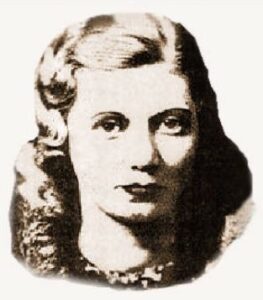 Every outlaw has their little quirks. It’s almost like they like to leave a calling card…even if it might get them caught. Some people think they do it because they want to get caught. I suppose the reasons for those little “calling cards” were as varied as the people using them. During the depression-era, there was an outlaw named Edna “Rabbits” Murray. She and her partner, Volney Davis were robbers, which wasn’t so strange for that or any other era, but Murray was…quirky!! She was actually known to the press as the “Kissing Bandit” due to her habit of kissing male robbery victims. While odd, I guess it’s better than shooting them.
Every outlaw has their little quirks. It’s almost like they like to leave a calling card…even if it might get them caught. Some people think they do it because they want to get caught. I suppose the reasons for those little “calling cards” were as varied as the people using them. During the depression-era, there was an outlaw named Edna “Rabbits” Murray. She and her partner, Volney Davis were robbers, which wasn’t so strange for that or any other era, but Murray was…quirky!! She was actually known to the press as the “Kissing Bandit” due to her habit of kissing male robbery victims. While odd, I guess it’s better than shooting them.
The media saw one thing, but the underworld saw something else. Murray was known as “Rabbits” for her skill as an escape artist. Murray and her boyfriend, Davis, chose banks as their target of choice, robbing a series of banks before she was finally arrested. Murray managed to escape in early May 1927, after which she and her boyfriend got right back into business. She was then arrested in a Chicago, Illinois raid. For this crime, she received a 25-year prison sentence at Jefferson City, Missouri. Once again, Murray managed to escape in November 1931, when she and a couple of other inmates climbed over a fence. Their short-lived freedom ended when they were quickly apprehended and returned to prison. The botched escape didn’t deter Murray, who was very determined, and she escaped again on December 13, 1932. Murray rejoined her boyfriend, and they continued their crime spree before finally settling in Aurora, Illinois.
Settling down in Aurora did not mean the end of her crimes or her troubles. On April 23, 1934, outlaws John Dillinger, Homer Van Meter, and John “Red” Hamilton, all friends or cohorts of the couple, arrived at their home seeking a place to hide out after being nearly captured by the FBI near Rhinelander, Wisconsin. While at their home, John Hamilton, who had been badly wounded during the shootout with the FBI, died of his injuries. For 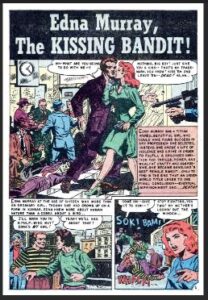 Murray, trouble just didn’t seem to end, and with the FBI hot on her tail, she was off and running again. She was recaptured on January 22, 1935. This time, she was indicted along with several members of the Barker-Karpis Gang for a conspiracy to kidnap wealthy Minnesota banker Edward Bremer in January 1934. Once again, Murray ran. She went to Wichita, Kansas with Jess Doyle, a member of the Barker-Karpis Gang and her sister’s boyfriend. She still couldn’t hide. She was arrested on February 7, 1935. Following that arrest, she was convicted, along with several others, in the kidnapping conspiracy and sentenced to federal prison on May 6, 1935. While in prison, she marketed her persona as a “gangster’s moll” in a number of newspapers and journals, writing articles with titles such as “I Was a Karpis-Barker Gang Moll”. She finally stayed put, and she was paroled from the Women’s Prison at Jefferson City, Missouri, on December 20, 1940. From there Murray moved to California and apparently went straight (or at least retired from her life of crime) or never got caught again, anyway. She died in San Francisco in 1966. Cause of death isn’t known, or not publicized, but she is buried in San Francisco.
Murray, trouble just didn’t seem to end, and with the FBI hot on her tail, she was off and running again. She was recaptured on January 22, 1935. This time, she was indicted along with several members of the Barker-Karpis Gang for a conspiracy to kidnap wealthy Minnesota banker Edward Bremer in January 1934. Once again, Murray ran. She went to Wichita, Kansas with Jess Doyle, a member of the Barker-Karpis Gang and her sister’s boyfriend. She still couldn’t hide. She was arrested on February 7, 1935. Following that arrest, she was convicted, along with several others, in the kidnapping conspiracy and sentenced to federal prison on May 6, 1935. While in prison, she marketed her persona as a “gangster’s moll” in a number of newspapers and journals, writing articles with titles such as “I Was a Karpis-Barker Gang Moll”. She finally stayed put, and she was paroled from the Women’s Prison at Jefferson City, Missouri, on December 20, 1940. From there Murray moved to California and apparently went straight (or at least retired from her life of crime) or never got caught again, anyway. She died in San Francisco in 1966. Cause of death isn’t known, or not publicized, but she is buried in San Francisco.
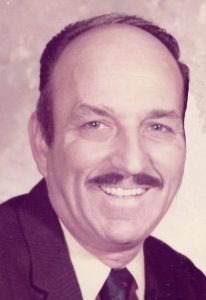
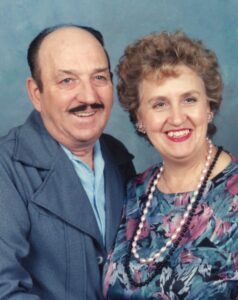 I never thought that at 51 years old, I would be saying “goodbye for now” to my dad, Al Spencer. Dad was 83 years old when he went to be with the Lord on December 12, 2007, but he never seemed like he was 83. Now, I can’t believe he has been gone 15 long years. Dad told me once that after you reach 18, you never feel any older. I’m sure there are people who would disagree with that statement, but I believe that it is statements like that made by people who truly believe it, that allow them to stay young. Dad always seemed young to me…right up until he left us. Even after surgery and a very long, drawn out recovery, he still seemed young, or maybe young at heart. He loved to tease his girls and the grandchildren, who loved to run past his chair to see if they were quick enough to get by before Grandpa could swat them. Mostly they were too slow, but they were delighted when they got away with it. Dad was always making jokes, and it really made his day when he could make people laugh. He loved having a house filled with joy.
I never thought that at 51 years old, I would be saying “goodbye for now” to my dad, Al Spencer. Dad was 83 years old when he went to be with the Lord on December 12, 2007, but he never seemed like he was 83. Now, I can’t believe he has been gone 15 long years. Dad told me once that after you reach 18, you never feel any older. I’m sure there are people who would disagree with that statement, but I believe that it is statements like that made by people who truly believe it, that allow them to stay young. Dad always seemed young to me…right up until he left us. Even after surgery and a very long, drawn out recovery, he still seemed young, or maybe young at heart. He loved to tease his girls and the grandchildren, who loved to run past his chair to see if they were quick enough to get by before Grandpa could swat them. Mostly they were too slow, but they were delighted when they got away with it. Dad was always making jokes, and it really made his day when he could make people laugh. He loved having a house filled with joy.
My dad lived an amazing life. He was raised on a farm in the Holyoke, Minnesota area. He went on a number of trips with his older brother, looking for work in the depression years, and then went to California to work for Douglas Aircraft. It really seems that it was this move that would bring him to his World War II destiny. After 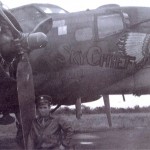
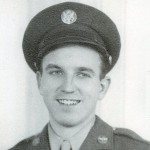 spending time building planes for Douglas Aircraft Company, the Army Air Forces saw in my dad, that he would be the perfect Flight Engineer and Top Turret Gunner on a B-17 crew, and that was how he spent his wartime service, stationed in Great Ashfield, Suffolk, England. While he never really spoke about it, my mom, Collene Spencer and sisters, Cheryl Masterson, Caryl Reed, Alena Stevens, Allyn Hadlock, and I have always been so proud of him and his service.
spending time building planes for Douglas Aircraft Company, the Army Air Forces saw in my dad, that he would be the perfect Flight Engineer and Top Turret Gunner on a B-17 crew, and that was how he spent his wartime service, stationed in Great Ashfield, Suffolk, England. While he never really spoke about it, my mom, Collene Spencer and sisters, Cheryl Masterson, Caryl Reed, Alena Stevens, Allyn Hadlock, and I have always been so proud of him and his service.
Dad traveled to other countries, but in his opinion, the United States was the best country in the whole world, although I’m sure he would have loved to have seen Israel. Dad took our family on yearly vacations…every year, without fail, so we could see what a wonderful country we lived in. My mom, sisters, and I were treated to so many places, with the Black Hills being one of his favorites. He loved the beauty of the area, but more importantly, he loved the patriotism of the area. After his passing, when my husband Bob and I went to the Black Hills for our annual trip to the area, I always felt like I could hear my dad’s echo telling us about the area, and how proud he was to be an American. I like to think of him there, because it was one of the places where he was the happiest.
Dad loved God, family, and country. He was a true Christian, and wonderful husband and dad, and he was a 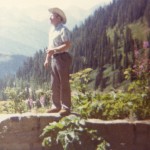
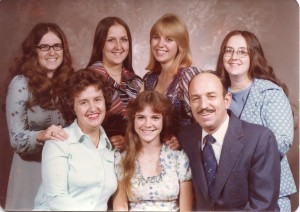 true patriot. He was raised in church, and he and our mom raised their girls in the church. We know who we are, and we know that our God loves us, just like He loves our parents. Now that our parents live in Heaven, I know that they are watching over us and we try to live lives that we know will make them proud. We all miss then terribly, but we know that they are in our future now, and not in our past. We look forward to seeing them again soon. We love you both Dad and Mom, and we wish you were still here.
true patriot. He was raised in church, and he and our mom raised their girls in the church. We know who we are, and we know that our God loves us, just like He loves our parents. Now that our parents live in Heaven, I know that they are watching over us and we try to live lives that we know will make them proud. We all miss then terribly, but we know that they are in our future now, and not in our past. We look forward to seeing them again soon. We love you both Dad and Mom, and we wish you were still here.

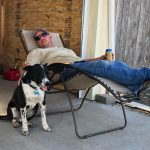 For a number of years, my nephew, Barry Schulenberg’s story has been life as usual, but recently all that has changed. Oh, many things are still the same. Barry still loves to go hiking, bicycle riding, cross country skiing, and snowshoeing with his wife of almost 18 years, Kelli Schulenberg. They also enjoy traveling and attending concerts. In addition to that, Barry is a hard-working man, taking care of their place in the country, splitting wood, watering their many trees, and taking care of their dog, Scout…or maybe, Scout takes care of them. Those things haven’t really changed in his life in quite a while.
For a number of years, my nephew, Barry Schulenberg’s story has been life as usual, but recently all that has changed. Oh, many things are still the same. Barry still loves to go hiking, bicycle riding, cross country skiing, and snowshoeing with his wife of almost 18 years, Kelli Schulenberg. They also enjoy traveling and attending concerts. In addition to that, Barry is a hard-working man, taking care of their place in the country, splitting wood, watering their many trees, and taking care of their dog, Scout…or maybe, Scout takes care of them. Those things haven’t really changed in his life in quite a while.
The big news is that Barry’s work life is changing. Barry has worked for the State of Wyoming for a number of years now, as a field mechanic. That means that Barry goes to the truck that have broken down, instead of the 
 trucks coming to him. That has meant overtime at times, because the truck, especially the snowplow trucks are a vital part of road maintenance in the Winter. Barry has traveled to several towns and sites around the Natrona County area to service the equipment used in these areas. All that is about to come to an end. Barry was recently offered and has accepted a promotion to a supervisory position. His boss is planning to retire soon, and they have asked Barry to replace him.
trucks coming to him. That has meant overtime at times, because the truck, especially the snowplow trucks are a vital part of road maintenance in the Winter. Barry has traveled to several towns and sites around the Natrona County area to service the equipment used in these areas. All that is about to come to an end. Barry was recently offered and has accepted a promotion to a supervisory position. His boss is planning to retire soon, and they have asked Barry to replace him.
That said, Barry has been busily training for his new position, as well as training his own replacement who will be taking over when Barry moves up. For Barry, the promotion is with mixed feelings, because he has really enjoyed his job, but looking to the future, he knew that there would come a day when he would really need to come off of field work and have a job that has less travel, less time in the freezing cold, and less heavy physical 
 labor. No, at 44 years old, Barry is not at that point yet but there will come a day, and if he doesn’t take the opportunity currently being offered, he could miss the opportunity all together. Being wise, Barry saw that, and so he decided to take the promotion now. I really couldn’t be happier for him. It will be a different kind of work, but I think he will find it interesting, and he is well like at work, so I know that the other men all wish him well as he moves up the ladder. I’m really excited for the next part of Barry’s future. Today is Barry’s birthday. Happy birthday Barry!! Have a great day!! We love you!!
labor. No, at 44 years old, Barry is not at that point yet but there will come a day, and if he doesn’t take the opportunity currently being offered, he could miss the opportunity all together. Being wise, Barry saw that, and so he decided to take the promotion now. I really couldn’t be happier for him. It will be a different kind of work, but I think he will find it interesting, and he is well like at work, so I know that the other men all wish him well as he moves up the ladder. I’m really excited for the next part of Barry’s future. Today is Barry’s birthday. Happy birthday Barry!! Have a great day!! We love you!!
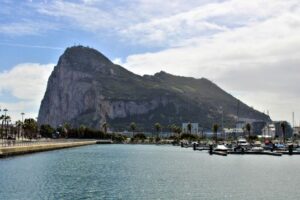 The Rock of Gibraltar is a unique rock located in the British territory of Gibraltar, near the southwestern tip of Europe on the Iberian Peninsula, and near the entrance to the Mediterranean. It is a huge monolithic limestone promontory that stands high above the water, although it actually sits on the edge of the land. During World War II, the rock was actually a war tool, and an amazing one at that. The British Army dug a maze of defensive tunnels inside the rock during the war, and the massive cliff is famous for the more than 30 miles of cleared space that served as a housing area for guns, ammunition, barracks, and even hospitals for wounded soldiers.
The Rock of Gibraltar is a unique rock located in the British territory of Gibraltar, near the southwestern tip of Europe on the Iberian Peninsula, and near the entrance to the Mediterranean. It is a huge monolithic limestone promontory that stands high above the water, although it actually sits on the edge of the land. During World War II, the rock was actually a war tool, and an amazing one at that. The British Army dug a maze of defensive tunnels inside the rock during the war, and the massive cliff is famous for the more than 30 miles of cleared space that served as a housing area for guns, ammunition, barracks, and even hospitals for wounded soldiers.
Recently, it was discovered that the rock held another, previously unknown secret use. Hidden in the famous rock is a secret chamber, known as the “Stay Behind Cave.” The cave measures 45 x 16 x 8 feet, and it has long been the site of a top-secret World War II plot called Operation Tracer. British Intelligence found out in 1940, that Hitler was planning to invade Gibraltar and cut off Great Britain from the rest of the British Empire. It was another part of their evil plan to take over the world, and they needed Britain out of the way to accomplish their objective. Once the British knew about this plot, the British Admirals suggested that a secret room be constructed within the Rock of Gibraltar, where six men would hide and observe from two small openings any movement they could see on the harbor. 
Six men were selected. One of the men even agreed to Operation Tracer before he was even told what it was. That fact doesn’t shock me as much as the other men knowing about it and still being willing to participate. The plan was to seal the six men inside the secret chamber with enough supplies to last them a year (some say the food stores could have actually carried the men for 7 years) was put into action. The plan had to take in any eventuality, so it was said that if one of the men were to die, they would be buried in the brick floor. The only way the men could escape back into the outside world would be if Germany was defeated before the year’s-worth of supplies ran out. Construction on the chamber began in 1941 and ended in 1942. It featured a radio room, 10,000 gallons of water, power generators, and other necessities.
The men were rigorously trained for the upcoming mission, but just before Operation Tracer could officially begin, Hitler changed course and started to focus more on the Eastern Front. The men were never required to begin their mission. The mission aborted, the equipment was removed and the section of the rock leading to the secret chamber was blocked off. The chamber was to be kept top secret. I suppose in case it was ever 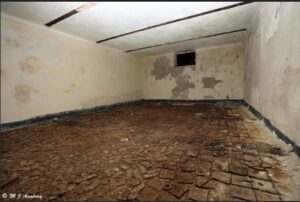 needed in a future war, but persistent rumors floated around about a secret chamber, and people continued to search for it. To me it is encouraging to know that it took people until December 26, 1996, to locate what they thought might be the chamber. That tells me that had the men been required to live in the room, they would probably have done so in absolute secrecy and safety. The suspicion about the room would persist for another decade, until finally, one of the six men who was supposed to partake in Operation Tracer confirmed that the room the explorers found in 1996, was indeed the room that was built for their top-secret operation all those years ago. It may be one of the best-kept secrets of World War II.
needed in a future war, but persistent rumors floated around about a secret chamber, and people continued to search for it. To me it is encouraging to know that it took people until December 26, 1996, to locate what they thought might be the chamber. That tells me that had the men been required to live in the room, they would probably have done so in absolute secrecy and safety. The suspicion about the room would persist for another decade, until finally, one of the six men who was supposed to partake in Operation Tracer confirmed that the room the explorers found in 1996, was indeed the room that was built for their top-secret operation all those years ago. It may be one of the best-kept secrets of World War II.
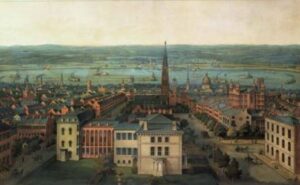
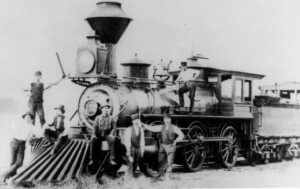 Building in a war zone!! Sounds crazy, right!! Nevertheless, in the middle of the Civil War, the United States began to build a railroad from Iowa to San Francisco, California. As with any railroad, the objective was to create a transcontinental railroad to facilitate transportation all across the nation. This was not going to be a quick project. In fact, it took six years to complete the entire length, but it was a great success. Named the Pacific Railroad, which is not the same as the Union Pacific Railroad, it was a railroad based in Missouri. It was a predecessor of both the Missouri Pacific Railroad and Saint Louis-San Francisco Railway, being chartered in 1849 by Missouri to extend from Saint Louis to the western boundary of Missouri and after Missouri was reached, to run on to the Pacific Ocean. Construction was delayed due to a cholera epidemic in 1849. That and other delays put the groundbreaking on hold until July 4, 1851. As the work progressed, the railroad purchased its first steam locomotive from a manufacturer in Taunton, Massachusetts. The locomotive arrived at Saint Louis by river in August 1852, which is a sight I would have loved to see. We
Building in a war zone!! Sounds crazy, right!! Nevertheless, in the middle of the Civil War, the United States began to build a railroad from Iowa to San Francisco, California. As with any railroad, the objective was to create a transcontinental railroad to facilitate transportation all across the nation. This was not going to be a quick project. In fact, it took six years to complete the entire length, but it was a great success. Named the Pacific Railroad, which is not the same as the Union Pacific Railroad, it was a railroad based in Missouri. It was a predecessor of both the Missouri Pacific Railroad and Saint Louis-San Francisco Railway, being chartered in 1849 by Missouri to extend from Saint Louis to the western boundary of Missouri and after Missouri was reached, to run on to the Pacific Ocean. Construction was delayed due to a cholera epidemic in 1849. That and other delays put the groundbreaking on hold until July 4, 1851. As the work progressed, the railroad purchased its first steam locomotive from a manufacturer in Taunton, Massachusetts. The locomotive arrived at Saint Louis by river in August 1852, which is a sight I would have loved to see. We 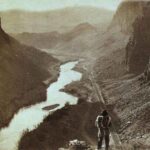 don’t think much about a locomotive being delivered by ship these days…mostly because we have the railroad for that delivery, but also because if it was going to be delivered by ship, out ships today are much bigger and better equipped to handle a locomotive.
don’t think much about a locomotive being delivered by ship these days…mostly because we have the railroad for that delivery, but also because if it was going to be delivered by ship, out ships today are much bigger and better equipped to handle a locomotive.
Finally finished to the first leg, the inaugural run of the locomotive took place on December 9, 1852, the Pacific Railroad had its inaugural run, traveling from its depot on Fourteenth Street, along the Mill Creek Valley, to Cheltenham in about ten minutes. It was a good run for the first one, and by the following May, it had reached Kirkwood. Several months later tunnels west of Kirkwood were completed, allowing the line to reach Franklin. The Southwest Branch of the Pacific Railroad was authorized in 1852 and split off at Franklin. This section was renamed Pacific, Missouri, in 1859. The remainder of the Southwest Pacific Railroad became the main line of the Saint Louis-San Francisco Railway in 1866.
Due to financial difficulties the Pacific Railroad did not reach Washington…a mere eighteen miles away, until February 1855. Nevertheless, the line reached Jefferson City, the state capital, later that year. By July 1858 the Pacific Railroad reached Tipton was the eastern terminal for the Butterfield Overland Mail, which was an overland mail service that went on into San Francisco. Adding the railroad to the coach service reduced mail 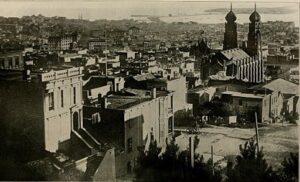
 delivery times between Saint Louis and San Francisco from about 35 days to less than 25 days. After construction was interrupted by the Civil War, the Pacific Railroad became the first railroad to serve Kansas City in 1865. In 1872, the Pacific Railroad was reorganized as the Missouri Pacific Railroad by new investors after a railroad debt crisis.
delivery times between Saint Louis and San Francisco from about 35 days to less than 25 days. After construction was interrupted by the Civil War, the Pacific Railroad became the first railroad to serve Kansas City in 1865. In 1872, the Pacific Railroad was reorganized as the Missouri Pacific Railroad by new investors after a railroad debt crisis.

